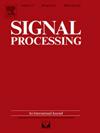Method for reconstructing the directional pattern of opportunistic array radar with dynamic elements
IF 3.4
2区 工程技术
Q2 ENGINEERING, ELECTRICAL & ELECTRONIC
引用次数: 0
Abstract
In order to solve the pattern synthesis problem of opportunity array radar, a dynamic array element pattern synthesis mathematical model and opportunity unit reconstruction scheme based on correlation chance programming under uncertain scenarios are established. The model is optimized to maximize the reliability of task requirements,and is solved by fuzzy simulation and mathematical analysis under given relevant constraints. In addition, a parallel differential evolution algorithm with secondary mutation(SMPDE) is proposed to improve the adaptability of opportunity array radar to different environments and tasks. By constructing Hanke matrices using different ideal radar arrays, feasible and base regions for initial population evolution can be obtained. On this basis, elements are added or deleted according to the requirements and new elements are flexibly arranged through differential evolution to obtain the best performance. In the process of iteration, the time point of secondary mutation is determined in real time according to the evolution curve and the potential inferior evolution is terminated in time. The simulation and analysis show that the model can achieve the maximum reliability of the task target in the current environment when the pattern reconstruction problem is involved, especially the opportunity array radar with multiple dynamic elements. Moreover, the model can flexibly reconstruct and optimize the pattern according to different requirements under different conditions to further enhance the overall robustness of the system.
求助全文
约1分钟内获得全文
求助全文
来源期刊

Signal Processing
工程技术-工程:电子与电气
CiteScore
9.20
自引率
9.10%
发文量
309
审稿时长
41 days
期刊介绍:
Signal Processing incorporates all aspects of the theory and practice of signal processing. It features original research work, tutorial and review articles, and accounts of practical developments. It is intended for a rapid dissemination of knowledge and experience to engineers and scientists working in the research, development or practical application of signal processing.
Subject areas covered by the journal include: Signal Theory; Stochastic Processes; Detection and Estimation; Spectral Analysis; Filtering; Signal Processing Systems; Software Developments; Image Processing; Pattern Recognition; Optical Signal Processing; Digital Signal Processing; Multi-dimensional Signal Processing; Communication Signal Processing; Biomedical Signal Processing; Geophysical and Astrophysical Signal Processing; Earth Resources Signal Processing; Acoustic and Vibration Signal Processing; Data Processing; Remote Sensing; Signal Processing Technology; Radar Signal Processing; Sonar Signal Processing; Industrial Applications; New Applications.
 求助内容:
求助内容: 应助结果提醒方式:
应助结果提醒方式:


